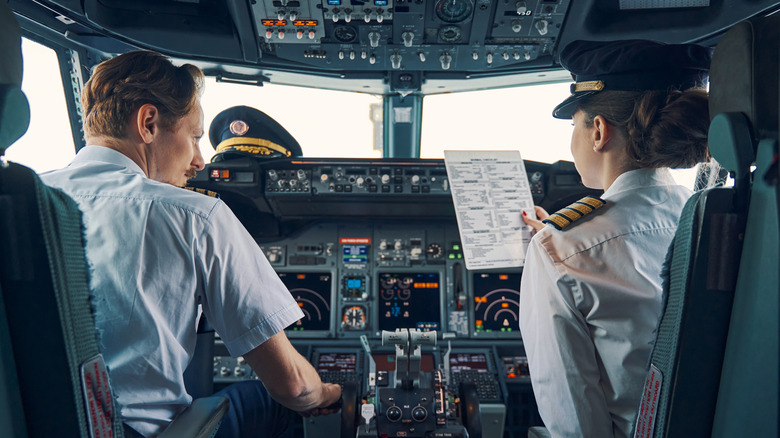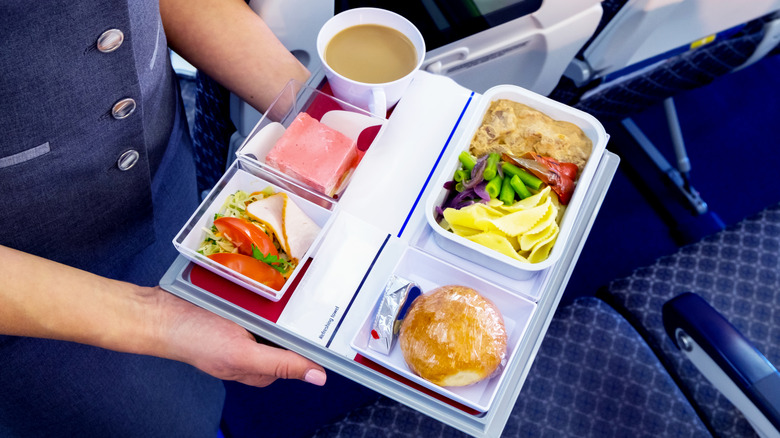The Bizarre Eating Rule That Pilots And Co-Pilots Have To Follow
Though dining high in the sky may come with a nice view, the food offered while up in the air tends to be all but desirable. Airplane food gets a bad rap — dry and bland food reheated tin trays and plastic-wrapped pouches don't exactly scream fine dining — but it's not entirely the chef's fault.
As the American Airlines food and beverage director told Vox, people actually lose around 30% of their "taste for salt" at flying altitudes. To compensate, extra sodium and flavor enhancers are added to the food, which can further dehydrate passengers. But people with boarding passes aren't the only ones who have to eat; the crew and pilots have to stay fueled on long flights, too.
Yes, pilots do eat during long flights, but don't worry, their co-pilots have their hands on the controls. Pilots have the option of bringing their own meals on the plane or choosing from a special selection of meals that are different than those available to the crew and passengers. And not only do flight attendants and pilots eat different meals, but the pilot and co-pilot must choose different selections from each other. The reason for this isn't rooted in hierarchical special treatment — although it makes sense they would be served something nicer than economy-class chicken breast — but rather, it's for safety.
I'll have what he's not having
It may seem odd for an employer to dictate what foods you can eat, but for pilots, it's just part of the job. Indeed, as Simple Flying notes, most airlines mandate that pilots and co-pilots eat different meals. Why, you ask? Look no further than the 1980 hit comedy film "Airplane!" which depicts a doomsday scenario of nearly the entire plane, including the pilot and co-pilot, getting food poisoning from the fish served in-flight, as shown in this clip.
According to Insider, the reason why pilots and co-pilots can't eat the same food in the air is a safety precaution to prevent the possibility of both pilots suffering from a foodborne illness. This ensures that if something goes wrong with the heath of one of the pilots, like food poisoning, the other pilot is able to step in and take over their duties.
This rule wasn't created for no reason. There have in fact been past instances of widespread in-flight food poisoning, such as a 1982 flight from Boston to Lisbon where the pilot, co-pilot, flight engineer, and 10 crew members were debilitated from a bad batch of tapioca pudding (per Insider). According to a New York Times article from 1984, at that time there was still no recommendation about what pilots should or shouldn't eat. But it wasn't long after that airlines began adopting the mandate that we still have today: pilots on the same plane can't eat the same meals.

